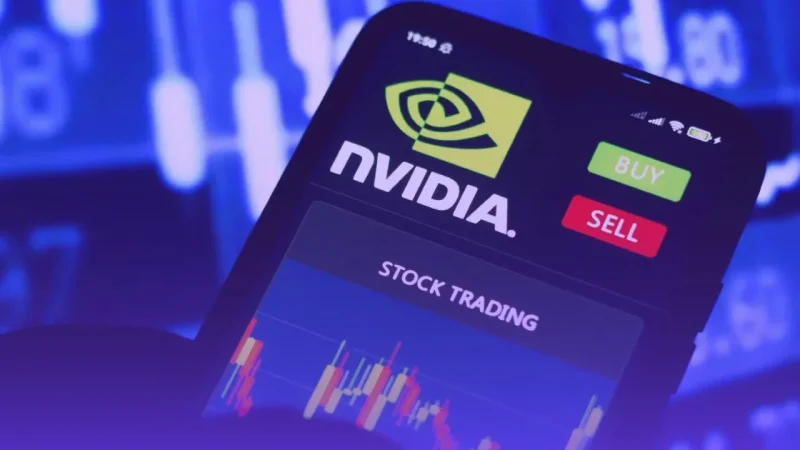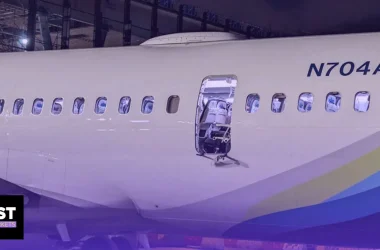Nvidia (NASDAQ: NVDA) continues to dominate with its AI chips, with an 84% market share in a market projected to reach $867.7 billion by 2030. However, Nvidia is much more than a chip company, and this is one of the reasons why NVDA stock witnessed a surge of over 200% in the past year. Recently, Nvidia entered a $1 billion investment round led by the Japanese tech giant, Softbank (OTCMKTS: SOBKY), in Wayve, a UK-based startup that wants to get its autonomous-driving technology into cars.
This was seen by many as an attempt to compete with Tesla’s (NASDAQ: TSLA) FSD software. Additionally, analysts at Goldman Sachs (NYSE: GS) have recently updated their NVDA stock forecast, setting a very bullish price target that shows their confidence in the company.
Nvidia’s Major Investment
Nvidia is joining a $1.05 billion funding round led by Softbank to invest in Wayve, joining another Magnificent Seven peer, Microsoft (NASDAQ: MSFT), who’s already an investor in the company and also participating in the funding round. Wayve is a startup that’s developing self-driving technology and hopes to use the funds to get its autonomous-driving technology into cars, in what is considered the UK’s largest ever AI fundraise. This is considered a huge boost for the self-driving vehicles industry, which has suffered setbacks in recent years in its efforts to convince regulators that driverless cars are safe.
Softbank’s managing partner and board member, Kentaro Matsui, called Wayve’s technology “transformative” and said that it could eliminate 99% of traffic accidents. It could be argued that people are not ready yet for fully autonomous cars, and that would be a very valid concern. For instance, we’ve all heard of the infamous accident in San Francisco where a woman was dragged under a vehicle operated by Cruise, General Motors’ (NYSE: GM) self-driving unit, which led regulators to take away Cruise’s permit and order it to recall all of its vehicles.
However, to make sure his technology is ultimately safe, the CEO of Wayve, Alex Kendall, plans to begin with driver assist technology, which will still require someone’s attention behind the wheel, before targeting vehicles that can operate without any human involvement. Wayve’s technology aims to learn driving rules and patterns on its own, rather than needing them to be programmed in, which would allow it to respond to unpredictable scenarios on the road more efficiently than the other self-driving systems in the market like Alphabet’s (NASDAQ: GOOG) Waymo.
Wayve wants carmakers and other fleet operators to install its technology into their vehicles, rather than own or operate the cars themselves, which could actually be an edge they have over industry leaders like Tesla, as their main goal becomes optimizing autonomous driving rather than worrying about the hundred different things a carmaker needs to worry about. Additionally, Wayve has been conducting trials on British public roads since 2018 and has already partnered with delivery fleets from Asda and Ocado, which proves that their autonomous driving system is working efficiently.
Why is Nvidia Investing in Wayve?
Nvidia is already the AI chips market leader, and many analysts are expecting the company to maintain this position when its Blackwell chips come out in the second half of this year. Therefore, in the future, Wayve could leverage Nvidia’s Blackwell platform to power training for their autonomous driving system, which in return, would add huge value to both parties.
Wayve would definitely be able to store more and more data using these chips, and that would help develop its autonomous driving system and increase its efficiency and ability to predict different everyday scenarios on the road. On the other hand, Nvidia would profit from providing these chips to Wayve, and this would result in other automotive companies taking notice and buying Nvidia chips to develop self-driving technologies and enhancing their AI products.
There’s a lot of potential for this partnership, as the British transport secretary, Mark Harper, said that self-driving cars could be on Britain’s roads by 2026, and according to the government, the automated vehicle bill, which is designed to start a “transport revolution” by enabling the safe deployment of self-driving cars, is expected to become law in the coming weeks. This means that Nvidia’s investment is going to print money in the future as the government also expects the self-driving vehicles industry in the UK to be worth approximately $52.6 billion by 2035.
Additionally, Wayve announced plans last month to open a research center in Vancouver, Canada, to accelerate its growth and this will be Wayve’s third location after London and Mountain View, California. This could mean that we will see Wayve’s technology expanding to the United States and Canada soon after it is fully implemented in the UK, which allows more room for the company’s growth and potentially to be a fierce competitor to Tesla’s FSD.
Nvidia’s New Partnership
Investors know that Nvidia’s GPUs are designed to accelerate deep learning training and inference across a wide range of applications. Therefore, it’s no surprise that Nvidia recently entered into a new partnership with MITRE (OTCMKTS: MMCRF) to build a $20 million supercomputer to speed the deployment of artificial intelligence capabilities across the U.S. federal government.
MITRE, which is a federally funded, not-for-profit research organization, has been a supplier of surveillance, communications and cybersecurity technologies to the Pentagon and U.S. intelligence agencies, supplying U.S. soldiers and spies with exotic technical products since the 1950s, says the project could improve everything from Medicare to taxes. The MITRE supercomputer will be based in Ashburn, Virginia, and should be up and running late this year.
This collaboration between MITRE and Nvidia represents an important step in harnessing AI technology for federal government agencies and unlocks opportunities for Nvidia to work with other agencies in the near future. Additionally, it’s another opportunity for Nvidia in the sovereign AI market, which is expected to grow massively as governments from all around the world seek to implement AI technologies in their daily operations.
Goldman Sachs Bullish on NVDA Stock
Thanks to this good news about Nvidia, analysts are getting more and more bullish on NVDA stock by the day, and very recently, Goldman Sachs analysts decided to go all in on NVDA stock. The analysts released a new note to investors yesterday, which said that they maintained their “Buy” rating on NVDA stock, and they also increased their 12-month price target from $1,000 to $1,100.
The analysts also added that despite Nvidia’s year-to-date outperformance, they see positive EPS revisions driving another leg up in the stock, especially with Nvidia trading at a 36% premium to their coverage universe versus its past 3-year median premium of 160%. Goldman Sachs analysts believe that AI remains Nvidia’s key growth driver, expecting that Data Center results for the second quarter to be fueled by robust demand for AI-related computing and networking, as the positive momentum from the AI ecosystem and product launches like H200 and Spectrum-X contribute to this outlook. As a result, they predict sequential Data Center growth of 10%, 17%, and 5% for the second, third, and fourth quarters, respectively.
It doesn’t come off as a surprise that more analysts and institutional investors are betting on NVDA stock thanks to the company’s leading AI position, and while a few Wall Street analysts are saying that it’s overhyped, we’ve seen Nvidia prove these people wrong more than once with its impressive products and even more impressive earnings. For now, Nvidia investors have to wait for Nvidia’s upcoming earnings on May 22nd to see where the stock might move, and based on that, they could decide if it’s time to take profits or keep holding the stock for future gains. However, what’s certain is that Nvidia’s earnings are so important that they could cause a shift in the entire market, so we can’t wait to see the report.
Disclaimer
Please visit and read our disclaimer here.









